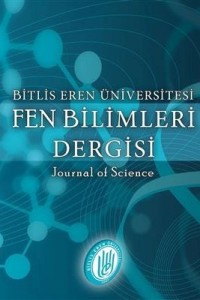Abstract
References
- Mitchell TM. Machine Learning, McGraw-Hill Science, 1997.
- Langley P, Simon P. 1995. Applications of machine learning rule induction. Communications of the ACM, 38(11): 11-46.
- Yumurtaci R. 2013. Role of energy management in hybrid renewable energy systems: case study-based analysis considering varying seasonal conditions. Turk J Elec Eng & Comp Sci, 21(4): 1077-1091.
- Kulaksiz AA, Akkaya R. 2012. Training data optimization for ANNs using genetic algorithms to enhance MPPT efficiency of a stand-alone PV system. Turk J Elec Eng & Comp Sci, 20: 1-14.
- Sharma R, Suhag S. 2017. Novel control strategy for hybrid renewable energy-based standalone system. Turk J Elec Eng & Comp Sci, 25(3): 2261-2277.
- Raju L, Sakaya M, Mahadevan S. 2017. Implementation of energy management and demand side management of a solar microgrid using a hybrid platform. Turk J Elec Eng & Comp Sci, 25(3): 2219-2231.
- John G, Cleary E, Leonard E. 1995. K*: An instance-based learner using an entropic distance measure. In: 12th International Conference on Machine Learning, pp. 108-114.
- Quinlan JR. 1986. Induction of decision trees. Machine Learning, 1: 81-106.
- Clark P, Niblett T. 1989. The CN2 induction algorithm. Machine Learning, 3(4): 261-283.
- Ho TK. 1995. Random decision forests. Proceedings of the 3rd International Conference on Document Analysis and Recognition, Montreal, QC. pp. 278-282.
- Garcia S, Derrac J, Cano J, Herrera F. 2012. Prototype selection for nearest neighbor classification: Taxonomy and empirical study. IEEE Transactions on Pattern Analysis and Machine Intelligence, 34(3): 417-435.
- Steinwart I, Christmann A. 2008. Support Vector Machines, Springer-Verlag, New York.
- Uzun Y, Arıkan H, Tezel G. 2016. Rule extraction from training artificial neural network using variable neighbourhood search for wisconsin breast cancer. Journal of Multidisciplinary Engineering Science and Technology (JMEST), 3(8): 5452-5458.
- Freund Y, Schapire RE. 1997. A decision-theoretic generalization of on-line learning and an application to boosting. Journal of Computer and System Sciences, 55: 119-139.
- Metz CE. 1978. Basic principles of ROC analysis. Sem Nuc Med, 283-298.
Abstract
The
use of renewable energy sources in the production of electricity has become
inevitable in order to reduce the greenhouse gases left in the atmosphere that
cause the Earth to warm up. Although countries on a national basis have
implemented a number of policies to support electricity generated from
renewable energy sources, investments to produce electricity without a license
on a local basis are not desirable. According to the climatic conditions of the
power plant of 1 MW installed founded in Konya and power plant production data
are monitored. Machine learning is a sub-branch of artificial intelligence that
deals with the design and development of algorithms that allow computers to
develop their behavior based on experimental data. In this study, Naive Bayes,
Decision Tree, CN2 Rule Induction, Random Forest, Support Vector Machine,
k-Nearest Neighbor, Artificial Neural Network, Logistic Regression and AdaBoost
machine learning algorithms are used for prediction and classification.
Generally, energy investors are curious about the return on their investment.
It is very important for energy providers to predict how much electricity will
be generated from existing solar power plants and accordingly determine the
measures they will take to meet the electricity demand in the future. ROC
analyzes were performed for machine learning models and performance evaluation
was performed. In this study, the best performance estimation value obtained
from the solar power plant depending on the weather conditions was obtained
with 92.24% accuracy.
References
- Mitchell TM. Machine Learning, McGraw-Hill Science, 1997.
- Langley P, Simon P. 1995. Applications of machine learning rule induction. Communications of the ACM, 38(11): 11-46.
- Yumurtaci R. 2013. Role of energy management in hybrid renewable energy systems: case study-based analysis considering varying seasonal conditions. Turk J Elec Eng & Comp Sci, 21(4): 1077-1091.
- Kulaksiz AA, Akkaya R. 2012. Training data optimization for ANNs using genetic algorithms to enhance MPPT efficiency of a stand-alone PV system. Turk J Elec Eng & Comp Sci, 20: 1-14.
- Sharma R, Suhag S. 2017. Novel control strategy for hybrid renewable energy-based standalone system. Turk J Elec Eng & Comp Sci, 25(3): 2261-2277.
- Raju L, Sakaya M, Mahadevan S. 2017. Implementation of energy management and demand side management of a solar microgrid using a hybrid platform. Turk J Elec Eng & Comp Sci, 25(3): 2219-2231.
- John G, Cleary E, Leonard E. 1995. K*: An instance-based learner using an entropic distance measure. In: 12th International Conference on Machine Learning, pp. 108-114.
- Quinlan JR. 1986. Induction of decision trees. Machine Learning, 1: 81-106.
- Clark P, Niblett T. 1989. The CN2 induction algorithm. Machine Learning, 3(4): 261-283.
- Ho TK. 1995. Random decision forests. Proceedings of the 3rd International Conference on Document Analysis and Recognition, Montreal, QC. pp. 278-282.
- Garcia S, Derrac J, Cano J, Herrera F. 2012. Prototype selection for nearest neighbor classification: Taxonomy and empirical study. IEEE Transactions on Pattern Analysis and Machine Intelligence, 34(3): 417-435.
- Steinwart I, Christmann A. 2008. Support Vector Machines, Springer-Verlag, New York.
- Uzun Y, Arıkan H, Tezel G. 2016. Rule extraction from training artificial neural network using variable neighbourhood search for wisconsin breast cancer. Journal of Multidisciplinary Engineering Science and Technology (JMEST), 3(8): 5452-5458.
- Freund Y, Schapire RE. 1997. A decision-theoretic generalization of on-line learning and an application to boosting. Journal of Computer and System Sciences, 55: 119-139.
- Metz CE. 1978. Basic principles of ROC analysis. Sem Nuc Med, 283-298.
Details
| Primary Language | Turkish |
|---|---|
| Journal Section | Araştırma Makalesi |
| Authors | |
| Publication Date | June 15, 2020 |
| Submission Date | June 18, 2019 |
| Acceptance Date | December 5, 2019 |
| Published in Issue | Year 2020 Volume: 9 Issue: 2 |


